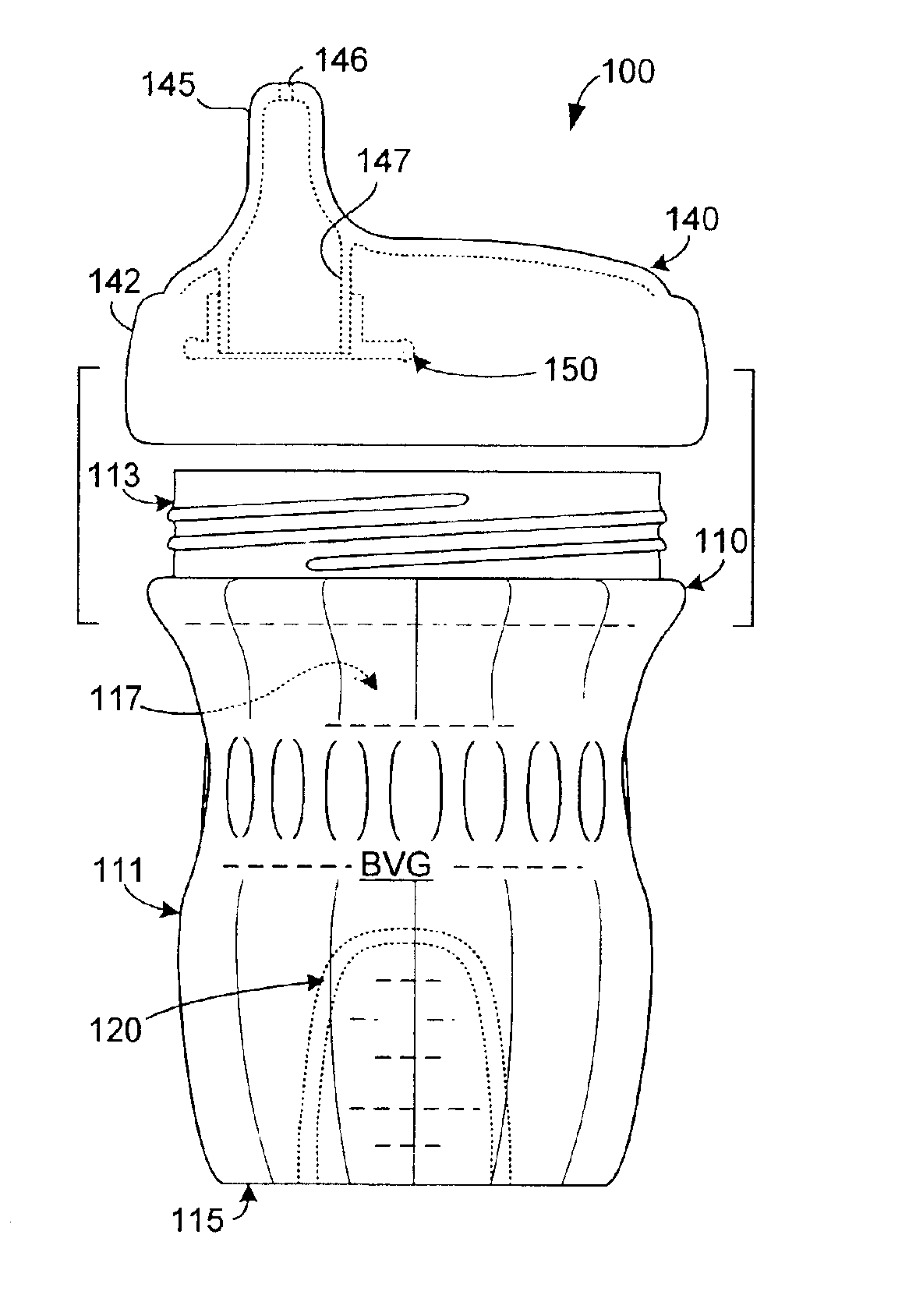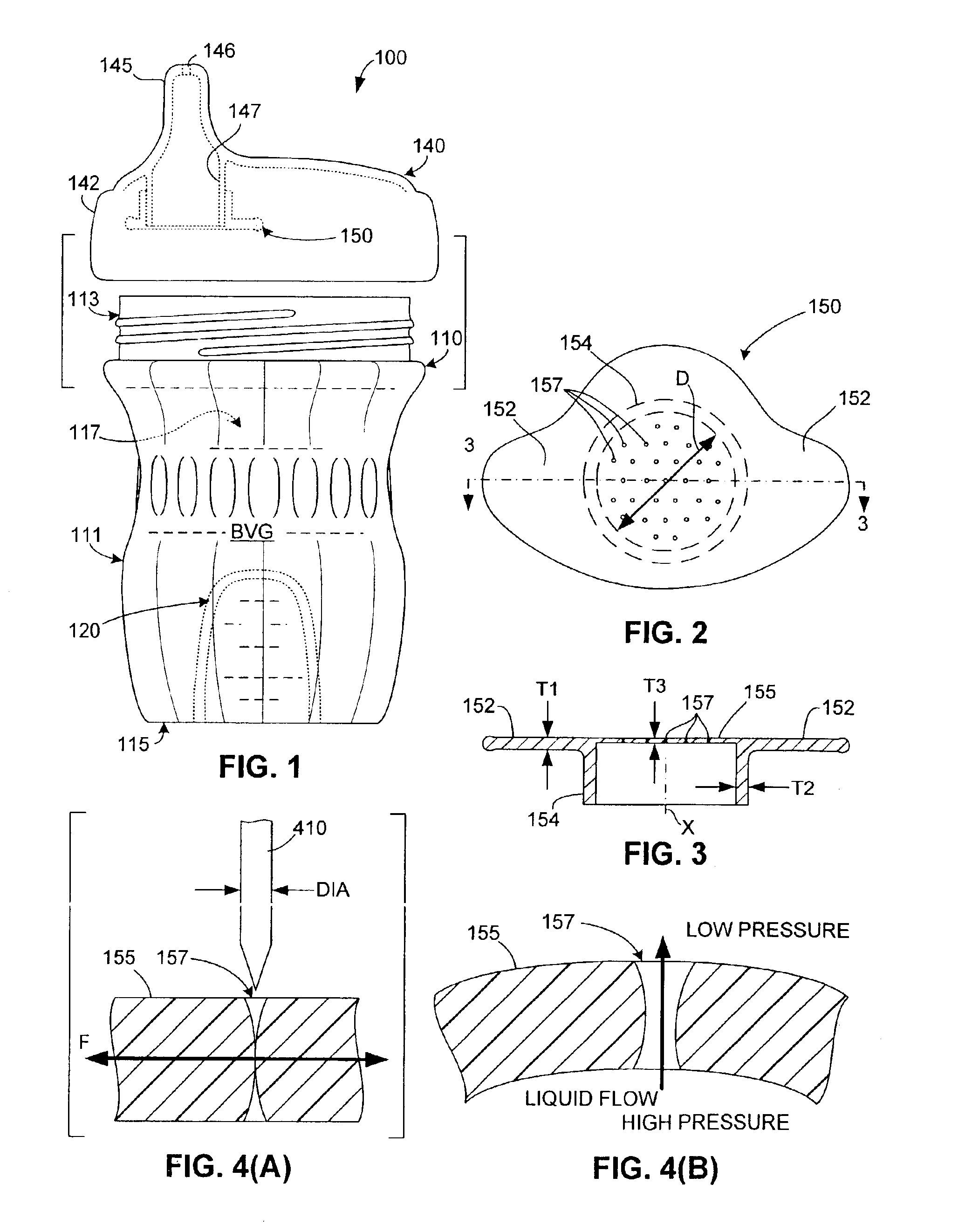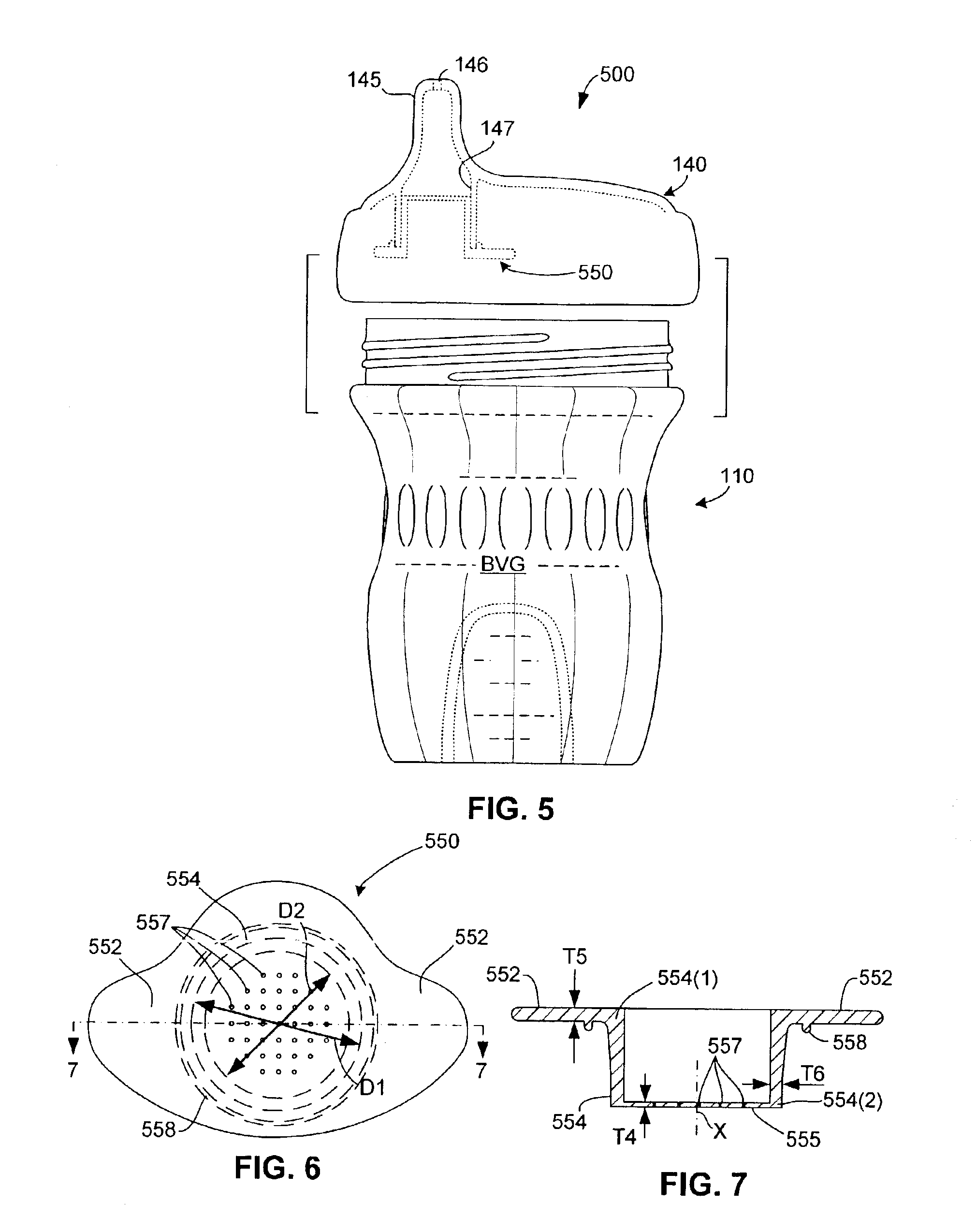Flow control element with pinholes for spill-resistant beverage container
a flow control element and beverage container technology, applied in the field of spill-resistant beverage containers, can solve the problems of reducing the resilient force needed to close the slit flap, affecting the safety of drinking vessels, so as to facilitate reliable leakage prevention and prevent leakage
- Summary
- Abstract
- Description
- Claims
- Application Information
AI Technical Summary
Benefits of technology
Problems solved by technology
Method used
Image
Examples
Embodiment Construction
[0016]FIG. 1 is a side view showing a sippy cup 100 according to an embodiment of the present invention. Sippy cup 100 generally includes a hollow cup-shaped body 110, a cap 140, and an elastomeric flow control element 150 mounted on cap 140.
[0017]Body 110 includes a roughly cylindrical sidewall 111 having a threaded upper edge 113, and a bottom wall 115 located at a lower edge of sidewall 111. Sidewall 111 and bottom wall 115 define a beverage storage chamber 117 in which a beverage BVG is received during use. Body 110 has a height of approximately 4 inches and a diameter of approximately 3 inches. Body 110 is molded from a suitable plastic using known methods. An optional cold plug 120 is mounted on bottom wall 115, as described in co-owned U.S. Pat. No. 6,502,418 issued Jan. 7, 2003, which is incorporated herein by reference.
[0018]Cap 140 includes a base portion 142 having threaded inside surface that mates with threaded upper edge 113 to connect cap 140 to body 110, thereby encl...
PUM
 Login to View More
Login to View More Abstract
Description
Claims
Application Information
 Login to View More
Login to View More - R&D
- Intellectual Property
- Life Sciences
- Materials
- Tech Scout
- Unparalleled Data Quality
- Higher Quality Content
- 60% Fewer Hallucinations
Browse by: Latest US Patents, China's latest patents, Technical Efficacy Thesaurus, Application Domain, Technology Topic, Popular Technical Reports.
© 2025 PatSnap. All rights reserved.Legal|Privacy policy|Modern Slavery Act Transparency Statement|Sitemap|About US| Contact US: help@patsnap.com



